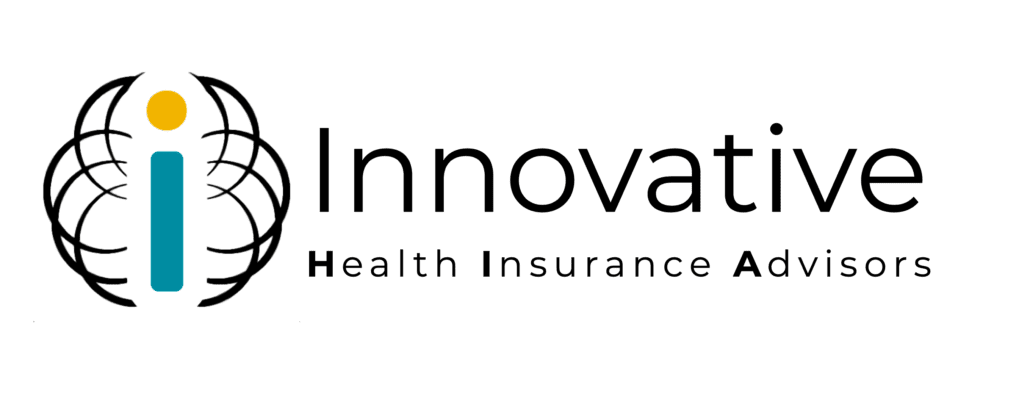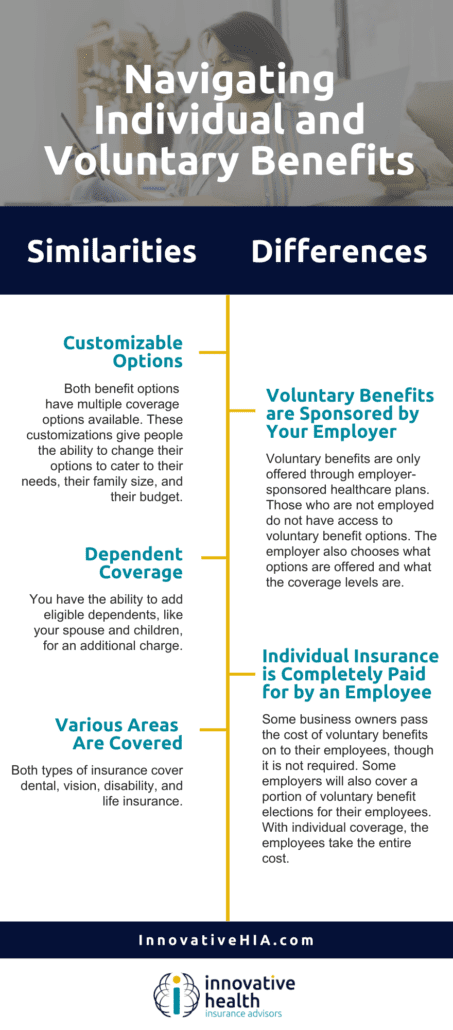Including options for voluntary benefits and supplemental benefits is quickly becoming the norm for most employers who offer health insurance to their employees. As an employer, attracting the best talent and keeping them is of the utmost importance to maintaining a successful business.
Over the last few years, there has been an increase in demand for voluntary benefits. While major medical coverage is the foundation of a good employee benefits program, it’s important to ask the question: how can I use these voluntary benefits to make my company more attractive to new prospects?
Let’s take a look.
Benefits of Offering Voluntary Benefits to Employees
Enhanced Employee Satisfaction and Retention
Offering voluntary benefits can increase employee loyalty and commitment to the company, as it shows that the employer is invested in their well-being.
Employees who have access to a wider range of benefits may experience less financial stress, which can lead to better job performance.
Access to voluntary benefits can also contribute to higher morale among employees, leading to a more positive work environment.
Attracting Top Talent
Companies that offer a comprehensive benefits package, including voluntary benefits, have a competitive edge in attracting top talent in their industry.
The ability to offer more benefits may also lead to an increase in job applicants, as potential employees are drawn to companies that invest in their employees’ well-being.
By offering a wider range of benefits, employers may also be able to recruit and retain employees who would otherwise look for positions with higher salaries.
Cost-effective Way to Offer More Benefits to Employees
Many voluntary benefits have limited or no cost to the employer, allowing them to offer more benefits without increasing their budget.
Voluntary benefits can also be affordable options for employees who may not have access to certain benefits otherwise.
Offering voluntary benefits can also provide tax advantages for both employers and employees, further increasing their value.
Most employers view voluntary benefits as a way to provide a choice to their employees, to offer options for their diverse workforce, and to ensure that their employees are happier and healthier. Employees need solutions that they can cater to their specific lifestyle.
Voluntary Benefit Options
Employers can offer a variety of voluntary benefits to employees to support their overall well-being and attract top talent. Health and wellness benefits such as telemedicine, wellness programs, and critical illness insurance can help employees maintain good physical and mental health.
Financial benefits like retirement savings plans, student loan assistance, and life insurance can help employees manage their finances and plan for the future. Lifestyle benefits such as pet insurance, legal assistance, and travel assistance can provide additional support for employees’ personal needs.
Other popular voluntary benefit options include hospital confinement, accident and critical illness coverage, disability, cancer, legal services, identity theft protection, and commuter benefits. This shift towards offering a wide range of voluntary benefits allows employers to align their benefits strategy with their overall company values and attract employees who value comprehensive coverage. Additionally, offering voluntary benefits can help employers retain top talent and create a loyal, committed workforce.
Implementing Voluntary Benefits Programs
Employee surveys and needs assessments are critical to identifying the most valuable benefits to offer in a voluntary benefits program. Employers can use surveys to gather information about what types of benefits employees would be interested in and what benefits they may already have. Additionally, needs assessments can identify the specific needs of different employee groups, such as new hires, long-term employees, or those approaching retirement. This information can help employers choose the benefits that are most relevant and valuable to their employees.
After identifying the most valuable benefits, the employer must evaluate and select benefit providers that offer the best value for the company and employees. This involves researching and comparing different providers to find the best offerings and pricing. Employers should also ensure that the providers they choose have a good reputation and are reliable.
Once the benefits have been chosen and the providers have been selected, the employer must communicate the benefits options and enrollment procedures clearly to employees. This may involve creating informational materials such as brochures, presentations, or videos that explain the benefits and how to enroll in them. Employers may also want to offer workshops or one-on-one consultations to help employees understand the benefits and make informed decisions about their enrollment.
Finally, to ensure the program’s success, the employer should measure and evaluate its effectiveness regularly. This may involve collecting feedback from employees, tracking enrollment rates and utilization of benefits, and reviewing the program’s impact on employee satisfaction and retention. This information can help employers identify areas of improvement and make adjustments to the program to ensure it remains aligned with employee needs and expectations.
In Summary
Offering voluntary benefits is an effective way to attract and retain top talent, increase job satisfaction and performance, and provide cost-effective benefits to employees. Employers should conduct employee surveys, evaluate benefit providers, communicate benefits options clearly, and measure program success to ensure a successful voluntary benefits program. As such, employers should consider offering voluntary benefits as part of a comprehensive benefits package to attract and retain the best employees.
With multiple generations involved in their workforce today, an employer must offer benefits that would cater to each of their needs. Those who are older might consider traditional benefits packages to be sufficient, but younger generations might prefer voluntary options.
Not only do these benefits allow your company to attract and retain talent that will benefit your company in the long run. For more information on how you can offer the best, affordable benefits to your employees, contact our team.

